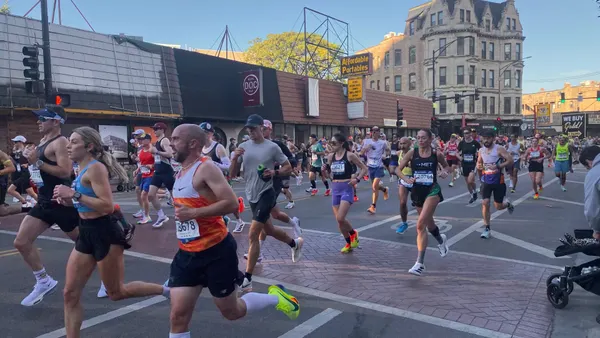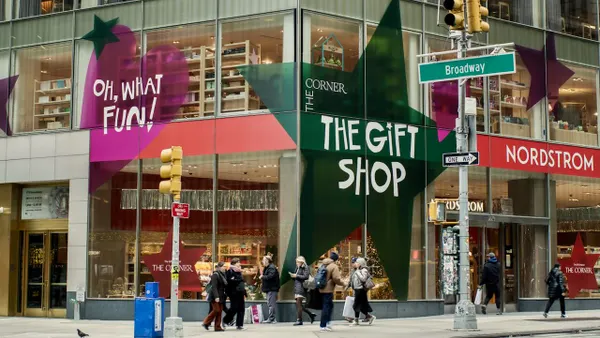Dive Brief:
-
Gap CEO Art Peck Wednesday spoke frankly about glimmers of hope for the retailer at Goldman Sachs' annual retail conference, saying the struggling retailer could benefit from Macy’s planned closing of 100 stores because many of its mall leases allow for rent renegotiation if an anchor closes or loses sales, Fortune reports.
-
But Peck also painted a stark picture of Gap’s prospects, telling analysts that "There are no compelling [fashion] trends driving the business,” TheStreet reports.
-
Peck's comments echo similar thoughts expressed by Urban Outfitters founder and CEO Richard Hayne, who told analysts in March that there’s no real reason for women to fill their closets with new clothes.
Dive Insight:
Investors were taken aback by Peck’s candid remarks, but one silver lining is that in order to make a change, retailers must first be aware of the problem: Consumers aren't compelled to buy clothes.
Gap is well aware. The once-iconic American street fashion retailer used to be top of mind for shoppers. These days, it’s closing stores, emphasizing off-price outlets and losing sales. The company recently reported adjusted second quarter earnings of 60 cents per share, compared to 64 cents a share a year ago. Q2 sales were $3.85 billion, down from $3.90 billion year over year. Gap also lowered its fiscal year guidance and said it expects adjusted earnings between $1.87 and $1.92 per share for fiscal 2016, missing FactSet analysts expectations of $1.95 per share.
One reason for Peck and Urban Outfitters chief Hayne's concerns is that many consumers in a post-Great Recession world are wary of the economy and itching to finding meaning through their spending, opting to put their money toward experiences rather than on acquiring more stuff.
That has made fashion more of “a spectator sport for the most part,” in fashion designer Tom Ford’s view. People tend to wear fashion in a few key cities, but most consumers are switching away from fashion, Ford said in an interview with the Hollywood Reporter published this week. "They sit there in their T-shirts and jeans, and they're critiquing who is on the red carpet and what they're wearing and, 'Oh I hate that and that.' But they are actually not consuming any longer.”
Retailers like Gap and Urban Outfitters would be happy to sell those T-shirts and jeans, but no real trends have taken hold that drive anyone to replace their skinny jeans or their wear-anywhere yoga pants. Retailers and fashion magazines attempted to declare the skinny jean “over” in recent years, but the style has stuck.
Hayne, however, says that it’s just a matter of time before things get better. “The last major fashion shift was 10 years ago when the skinny bottom returned to popularity,” he said in an earnings call in March. “The customer has a closet full of various skinny bottoms and she has many many long tops and sweaters to go over them. Without a fashion need to drive her purchases, the customer can easily defer her apparel spend.”
What retailers need is a “major fashion shift," Hayne said, although he and other retail leaders aren't sure when and how the industry will pivot. In the meantime, the question is how to stay in the apparel business. Peck offered few details about that, except to say “[C]learly, Gap needs to be remade to be relevant," according to TheStreet.














